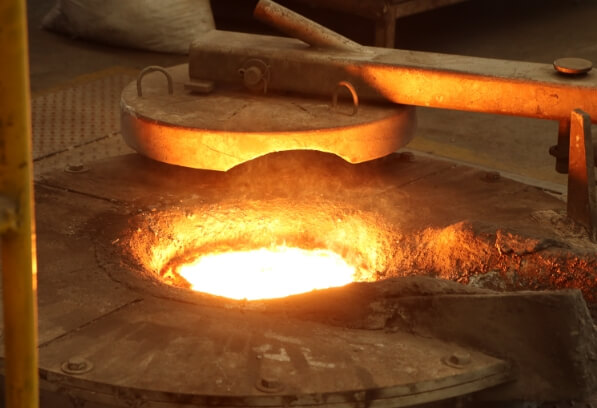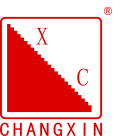Refractory materials, the “industrial armor” of high-temperature industries like steel, cement, and nonferrous metals, are directly linked to the security of China’s basic industries. Currently, my country’s refractory industry is undergoing a period of profound adjustment, facing multiple challenges including overcapacity, environmental upgrades, and structural shifts in demand.
Industry Status: Overcapacity and Transformation Pains Coexist
According to data from the National Bureau of Statistics and industry associations, the national refractory material output in 2022 was 23.01 million tons, a year-on-year decrease of 4.23%, showing a downward trend for three consecutive years. The industry’s capacity utilization rate was less than 70%, and the number of enterprises above the designated size was reduced from 1,958 in 2018 to 1,426 in 2022. However, the concentration of CR10 enterprises was only 18.6%, which is still lower than the 40% concentration in developed countries.
On the downstream demand side, the steel industry contributes approximately 70% of refractory demand. However, crude steel production in 2023 is expected to be 1.019 billion tons, a slight year-on-year decrease of 0.2%. In 2024, my country’s crude steel production will be 100.509 million tons, a year-on-year decrease of 1.7%; pig iron production will be 85.174 million tons, a year-on-year decrease of 2.3%; and coke production will be 48.927 million tons, a year-on-year decrease of 0.8%. These declines indicate that the industry has entered a plateau period. At the same time, the demand for high-performance refractory materials in emerging fields such as new energy and environmental protection has increased at an average annual rate of over 15%, highlighting the structural contradiction between supply and demand.
Breakthrough: Technological innovation and model transformation drive
- High-end technology breaks through homogeneous competition
Leading companies are increasing their R&D investment, with the industry’s R&D intensity projected to reach 2.1% in 2022, exceeding the manufacturing average. Ruitai Technology’s low-thermal-conductivity, multi-layer composite magnesia-iron-aluminum spinel bricks extend the life of cement kiln linings to 18 months and reduce coal consumption by 3kg per ton of clinker. Punai Co., Ltd.’s ultra-high-temperature ceramic materials for hydrogen energy have passed 1,000-hour durability testing, securing a leading position in the hydrogen energy industry chain. It is recommended that companies increase their R&D investment to over 4% of their total output, focusing on cutting-edge research in areas such as intelligent temperature control materials and nano-coating technology.
- Service-oriented transformation restructures the value chain
Promote the “product + service” EVI (Early Vendor Intervention) model. Beijing Lier and Baowu Steel have jointly established a laboratory. Through customized turnkey contracting services, they have increased the life of their ladle from 80 to 120 cycles, reducing overall customer costs by 15%. By 2023, the industry penetration rate of the service-oriented manufacturing model will reach 31%, a 19 percentage point increase from 2018, becoming a new engine for profit growth.
- Green Intelligent Manufacturing Reshapes the Industrial Ecosystem
By building a digital cloud platform to precisely manage energy consumption, Sinosteel Luoyang Refractory Co., Ltd. implemented a 5G+MES system, reducing natural gas consumption per unit and effectively controlling dust emission concentrations. Leveraging China Mobile’s support for a 5G+ smart factory, Sinosteel Luoyang Refractory Co., Ltd.’s production equipment is fully connected, enabling real-time data collection and upload, making the refractory production process transparent and intelligent. On the intelligent production line, a 5G-enabled flexible gripping robot arm precisely grasps refractory bricks, and AI-powered brick surface inspection technology can detect defects as subtle as 1 mm. This has saved the company over 10 million yuan in labor costs and increased production line output by 34%.
- Globalization to Exploit Growth Markets
Seizing opportunities arising from the Belt and Road Initiative, my country’s refractory exports are expected to reach 6.79 million tons in 2023, accounting for 38% of global trade. The expansion of steel production capacity in Southeast Asia is creating new demand. We recommend establishing overseas warehouses in Indonesia, Vietnam, and other locations to provide localized services. We will also develop chromium-free, environmentally friendly materials suitable for the European and American markets to overcome technical trade barriers.
Driven by the “dual carbon” goals, the refractory industry is shifting from scale expansion to quality and efficiency-oriented development. Companies must leverage technological innovation and business model transformation to achieve a coordinated effort across four key dimensions: high-end development, service-oriented development, green development, and internationalization. Only then can they emerge resilient amidst the wave of industrial transformation and help Chinese manufacturing climb to the higher end of the global value chain.
Regarding the recycling of waste refractory materials, establishing a closed “mining-production-use-recycling” ecosystem can increase the recycling rate of waste refractory materials. They can also collaborate with downstream companies such as steel and cement to build industrial symbiotic parks to achieve 100% in-house consumption of waste residues.

